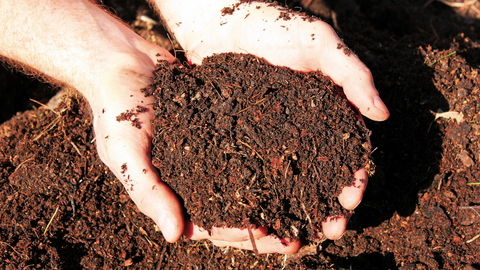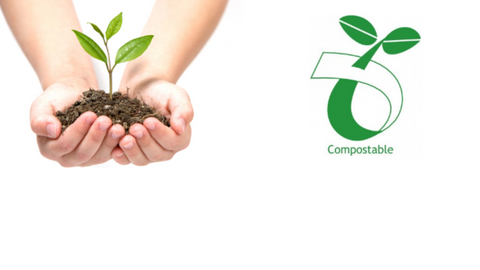You may be paying more for expensive nappies that do nothing more for the environment than cheaper, non-biodegradable disposables.
Most people think they’re helping out the environment by using biodegradable or eco-friendly nappies.
Although these nappies are typically free from chemicals and therefore healthier for your baby than regular disposables, they aren't as good for the environment as they seem.
In fact, they do not biodegrade in the landfill at all!
"Eco-friendly" and "green" are common marketing terms used by companies to make people feel good about buying their products.
Here's everything you need to know about eco-friendly nappies and why cloth nappies may be the better choice for environmentally conscious families.
Biodegradable Does Not Mean Compostable

First, it’s important to differentiate between compostable and biodegradable nappies. Compostable nappies break down into organic materials that become nutrients in the soil.
On the other hand, biodegradable simply means that the nappy will break down into smaller pieces over time.
Biodegradable nappies are not necessarily compostable and may simply break down into small bits that never decompose into organic materials.
Biodegradable Nappies Don’t Decompose in Landfills

When you throw a biodegradable nappy in the trash, you may imagine it melting away in a landfill and becoming part of the earth.
But, the reality is that your expensive biodegradable nappies sit in landfills for hundreds of years, just like regular disposables. Landfills do not decompose items.
In fact, even organic fruits and vegetables fail to decompose in landfills!
How is this possible? Well, landfills are designed to hold garbage, not break it down.
Trash is packed into pits lined with airtight materials to seal it off from the soil and layered with earth to keep odors down.
This creates an environment with very little air, sunlight, or water – all ingredients necessary for decomposition to take place.
Biodegradable nappies in this environment have no opportunity to break down and can last just as long as regular nappies.
These Products Still Meet Australia’s Biodegradable Standards
Wait, how can these products claim to be biodegradable if they don't break down in the landfill? A product that claims to be biodegradable and compostable must meet certain Australian standards.
One of these requirements is that 90% of the bioplastic materials in the item must break down within 180 days in the compost, not in a landfill.
So, nappies can still be certified biodegradable and compostable even if it fails to break down in landfills.
These nappies have to break down in industrial composting facilities which provide highly-controlled conditions for quick decomposition.
How to Break Down Biodegradable and Compostable Nappies
So, where are you supposed to put those used biodegradable nappies if they don't decompose in the landfill?
Some parents use worm farms to break down their children's nappies.
Though slightly gross and time-consuming to set up, this is a great way to reduce your waste and produce compost for your garden.
Of course, this isn't an option for most city-dwellers.
Some families may be able to take their nappies to a nearby industrial composting plant.
If your Australian nappies are endorsed with the ABA Seedling Composting logo, they can be composted in municipal and industrial composters.
Many communities in Australia are introducing separation systems to keep organic food waste out of landfills so that these products can completely decompose in specialised facilities. There are about 150 of these facilities in Australia.

Are Eco-Friendly Nappies Really Chemical-Free?
Biodegradable nappies may be kept out of landfills if you're willing to do some extra work. But, are they safer for your baby?
Organic and eco-friendly nappies claim to be made from natural ingredients that are minimally processed and free of chemicals.
Though this may be true, these nappies still contain sodium polyacrylate (SAP), the jelly substance that absorbs urine. This substance is often derived from petroleum which is a skin irritant and can contain carcinogens.
Even nappies that use wheat or cornstarch in the absorbent core still use small amounts of SAP. However, you can find a few gel-free brands that don’t contain this substance.
Biodegradable Nappies May Be Safer for Your Baby
Despite this, organic or bamboo nappies do contain significantly fewer chemicals than regular disposables.
They're often free from perfumes, dyes, and bleaching agents which can be much better for babies with sensitive, rash-prone skin.
Plus, since most chemicals are left out of the nappies, the manufacturing process takes a lighter toll on the environment than that of regular disposables.
Though, a lot of these nappies still use wood pulp which requires massive amounts of water and other natural resources to produce.
Cloth is Still The Most Environmentally-Friendly Nappy Material
Overall, eco-friendly disposables really aren't that much better for the environment than their non-disposable counterparts.
Unless you're willing to compost your own nappies, or your city provides composting services that will accept your disposables, they're just going to sit in a landfill for hundreds of years.
Why Switch to Cloth?
If you really care about reducing your waste, why not switch to cloth nappies?
They contain absolutely zero chemicals and are highly recommended for babies with sensitive, rash-prone skin.
Plus, cloth nappies can save you hundreds of dollars over the 2.5 years your child is in nappies. Especially if you're currently paying for expensive biodegradable nappies.
If you’re looking for the best types of cloth nappies to support your environmentally-friendly lifestyle, look for natural fibers.
Avoid cotton unless it's specific organic. Although organic cotton doesn't use chemicals to produce, it still requires large amounts of water. Bamboo and hemp are both sustainable materials that work great in cloth nappies.
We have a variety of bamboo, and organic cotton products to choose from! If you're feeling hesitant, check out our simplest cloth nappy system to settle any concerns you have about diving into cloth nappying.
